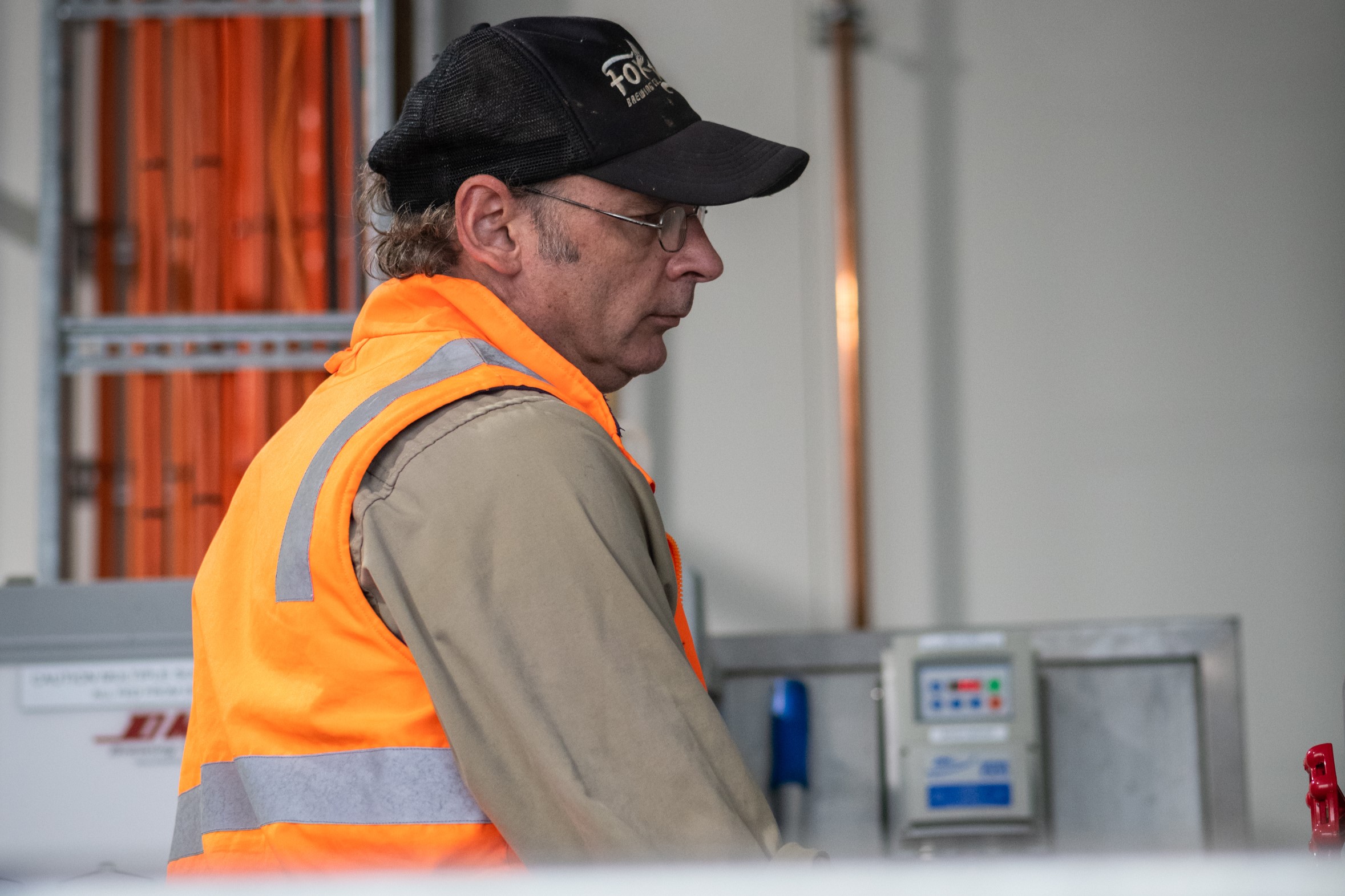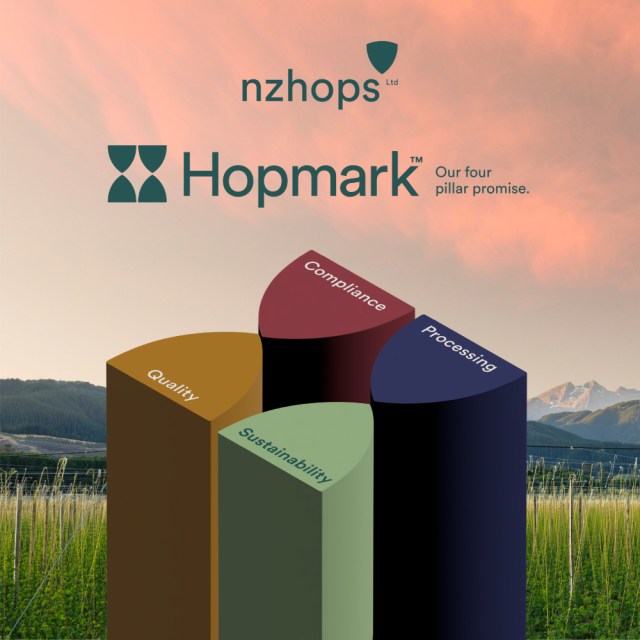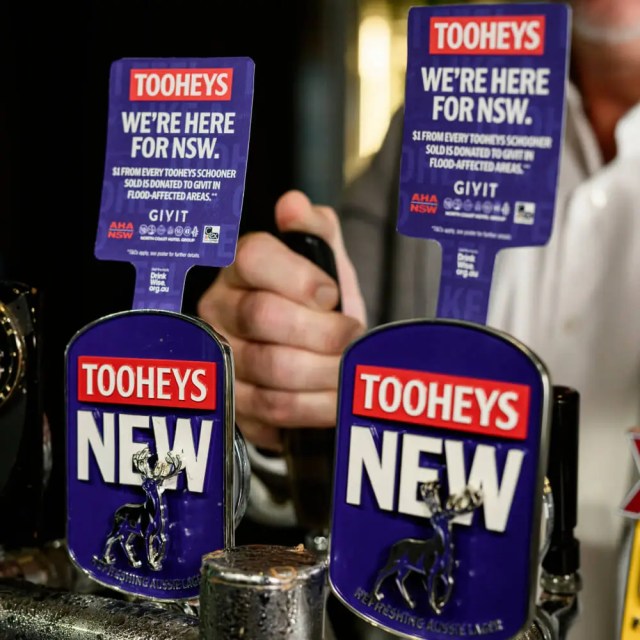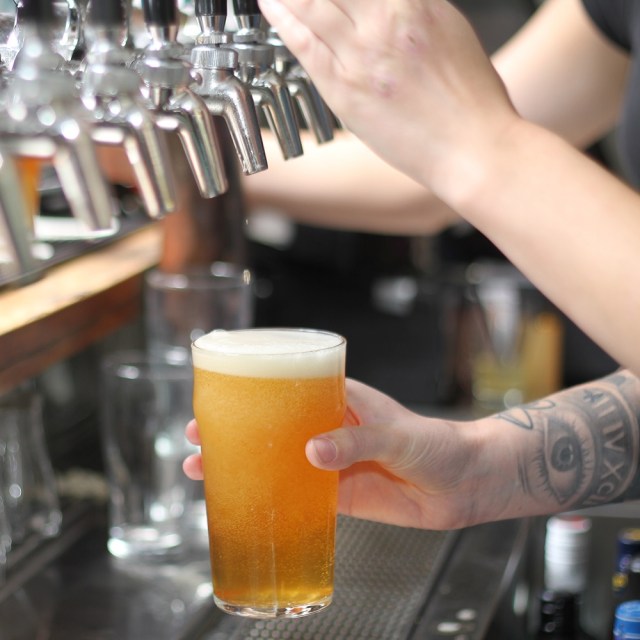
“Cleanliness is next to godliness” has always been a mantra in any self respecting brewery but Sydney’s One Drop Brewing – so often the provocateurs of ingenuity and experimentation in the brewhouse – are taking it in a completely different direction from keeping stainless spotless and are applying it to the way they are brewing more and more of their IPAs.
Coined as “Clean Fusion” by head brewer Nick Calder-Scholes (pictured above), One Drop’s experimental process effectively involves cleaning their IPAs on two separate occasions – once before and once after dry hopping – to remove any particulates that hop oils would normally piggy-back on and, in turn, be depleted by. Their latest bit of IPA R&D is geared towards achieving more true-to-style hop characteristics but also to tackle the issues new world IPAs are so often plagued by – like hop creep, hop burn and shelf stability.
Coupled with the myriad of IPA brewing techniques they’ve squirreled away in their Botany HQ in the three-plus years since founding, One Drop are now confident their Clean Fusion concept will be a mainstay of their IPA brewing processes. They also hope that by sharing their concept it will inspire other breweries to get creative as well – not necessarily in the same vein as what they have but to look at the process of maximising hop potential from outside the box.
“I guess it began with us questioning ourselves in terms of ‘we’re trying to brew modern beers, but are we approaching that in a modern way?’,” Nick told Beer & Brewer.
“Small bits of the overall Clean Fusion process have been in our IPA program from day one… but the real bones or foundations of it have been peppered throughout our IPA program for the past year – since we got some equipment to combine all the aspects of it in the one process. The first couple of beers (that we’ve brewed) really blew us away.”
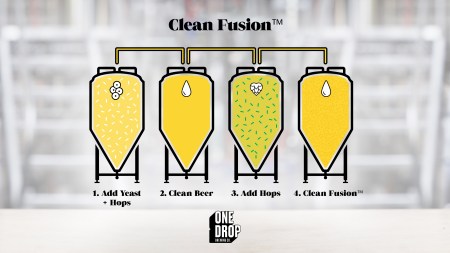
The equipment Nick refers to is a Plug & Win skid mounted centrifuge from GEA (“the best birthday present”). But despite the fact One Drop are applying their Clean Fusion technique via a centrifuge Nick stressed there were other ways to skin a cat when it came to cleaning beer so breweries “should use the tools that they have to do so”.
One Drop’s first, polish-like quick clean is done post-fermentation to remove mainly yeast and then the second, more standard centrifuge run, is done after dry hopping.
“Essentially you’re doing a normal ferment and adding hops throughout to achieve certain bio-transformative aspects.Then, just before you do your dry hop, you clean the beer up as much as you can.
“Timing is critical as you don’t want to pull it off the yeast too soon – it needs to go through its normal processes like VDK (vicinal diketones) rest and the like.
“Then, after treating the beer with your dry hop load… you clean the beer again to remove that hop particulate you’ve added. What we’re experiencing here is we’re able to do that without removing the oils because they’ve been able to dissolve completely.
“We’ve created a clean and unobtrusive medium for those hop oils to truly express their character. What you’re left with is an ultra clean beer that’s been dry hopped totally to the point where the saturation of the hops is really high and you’re pulling as much character of the hops as possible.”
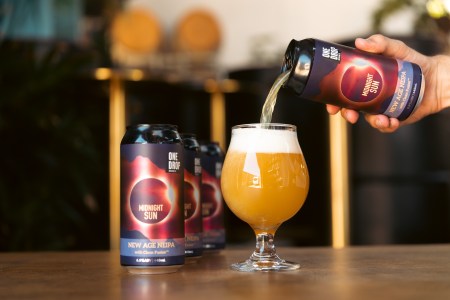
Some of One Drop’s latest releases, including Midnight Sun (NEIPA) and Get On Top (Oat Cream IPA), have been put through Clean Fusion’s paces while a whole raft of new beers will be out in the coming weeks that have also benefitted from the process.
Nick said the major takeaway from the sensory analysis of those beers already released was “just how clean the focus on the hops is”.
“The hop character and the nuances of that hop character is just more there. It’s true-to-type – and by that I mean when you open the bag of hops, or you rub hops together, you get these pungent, dank or soft aromas depending on the hop and that is translating over.
“I believe the buzzwords that hop growers are putting on the box are actually coming to fruition in the end product because of it. Like take passionfruit in Galaxy. I’ve never had strong passionfruit from Galaxy hops but with this process I have. We’ve enabled ourselves to tap into those more nuanced or more volatile aromas and we’re able to pull those through on to our beers as an added layer.”
LESS IS PROVING MORE
While it’s early days, and much of their evidence is purely anecdotal at this stage, Nick said they had shared their concept with other breweries, both here in Australia and elsewhere in the world, and that new, unexpected findings were beginning to filter back Down Under from those companies having done their own behind-the-scenes trials.
“A few of them have trialled it on some of their core range beers and they’re coming back to us saying that because they’re removing material before dry hopping they’re achieving the same sensory outcomes but by harnessing anywhere between five and 12 per cent less hops.
“We haven’t experienced this ourselves yet because we haven’t trialled that but it does pose the idea that if we’re getting more out of our hops then it means we’re using less, which means they’re being transported less, which means they’re stored less and which means, ultimately, there is this environmental aspect to it also – which for large production breweries is an added benefit than just purely saving money.”
What One Drop have experienced, and what they attribute to the centrifuge’s role in the brewhouse, is that by the removal of yeast and other particles, as well as the removal of Dissolved Oxygen, in the brewing process is ultimately leading to a better all round product.
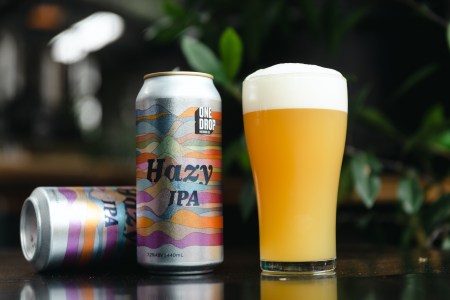
Nick said hop creep was a thing of the past in a Clean Fusion world while they were achieving a sizable reduction in hop burn as well due to the low polyphenol load of the beer when dry hopping occurs. From their own trials he also said their beers were staying fresher for longer.
“Filtration was something I was sceptical about for a long time and people may see centrifuges as a type of filtration. But in reality it’s just increasing Stokes’ Law right – it’s just amplifying gravity.
“So if you leave a beer in tank for four weeks it settles out. A centrifuge can do that in four hours. It’s just creating G-Force and increasing gravity. It’s nothing to be scared of.
“A lot of the people who are leading this hazy, New England IPA space in Australia are utilising a centrifuge in some shape or form. But that doesn’t mean this process is specific to a centrifuge. The idea is to clean your beer up in however way you want to do that.
“I want to leave it open to interpretation because perhaps that will be where some new innovation on this (Clean Fusion) concept will come from.”
Check out a video here where Nick talks more on One Drop’s Clean Fusion concept.





